Day trip to Herculaneum
Many people who stay in Naples make a point to visit to Pompeii during their time there. And if you haven’t been, you should go. It’s an easy 35 minute train ride and well worth the trip. But Pompeii isn’t the only place time stood still in 79 AD. Herculaneum is Pompeii’s lesser known (but still fascinating) stepsister in volcanic disaster.
Herculaneum was a seaside town filled with the vacation villas of wealthy Romans in 79 AD. When Mount Vesuvius erupted, smothering Pompeii in ash, the residents of Herculaneum we killed not by ash, but by the poisonous gasses which spewed out from the volcano. The town itself was covered by more than 20 meters of mud which dried as hard as concrete. This has made the excavations much more difficult and as a result, slower, and the area uncovered is much smaller than Pompeii. I think this makes visiting the site much easier and more “user-friendly”. While you could easily spend an entire day here, exploring all the nooks and crannies of buildings, we spent about half a day and were back in Naples for a late lunch. Today much of the ancient city still exists beneath the modern day city of Ercolano and is yet to be excavated.
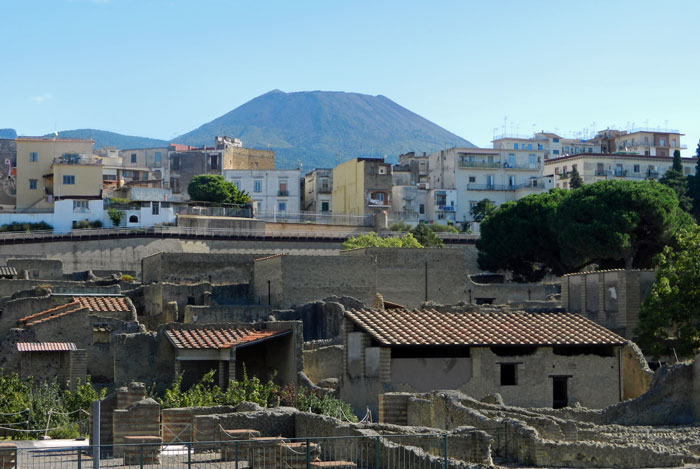
To get to Erculano from Naples take the Circumvesuviana Line from the Naples termini station. You will need to buy a separate ticket. At the time we went the tickets cost 2.10 euro each way. Follow the signs in the station and buy your ticket before you go down to where the trains are. The train was surprisingly crowded and we stood for most of the ride. Keep a firm grip on your belongings as this line is notorious for pickpockets. Make sure you get off at the Ercolano Scavi stop. This trip is easy and you can certainly do it without a tour.
When you get to the town, it’s a straight shot from the station to the entrance to the ruins, about 6 blocks down the main street. We took our time, stopping for a quick espresso along the way. I also noticed there was a nice looking museum, but it was closed on the day we were there. The ruins at Herculaneum are a UNESCO World Heritage Site and at the bottom of this post are some good resources for visiting Herculaneum.
And now, for the tour…
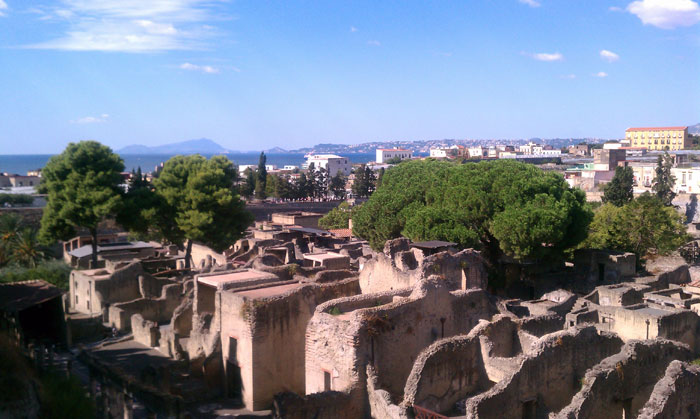
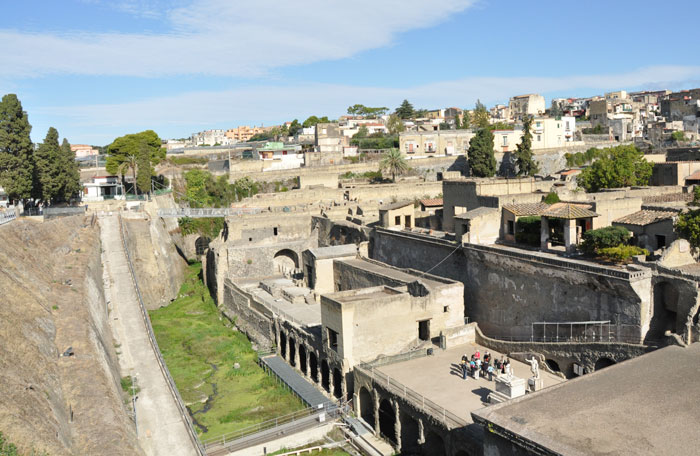
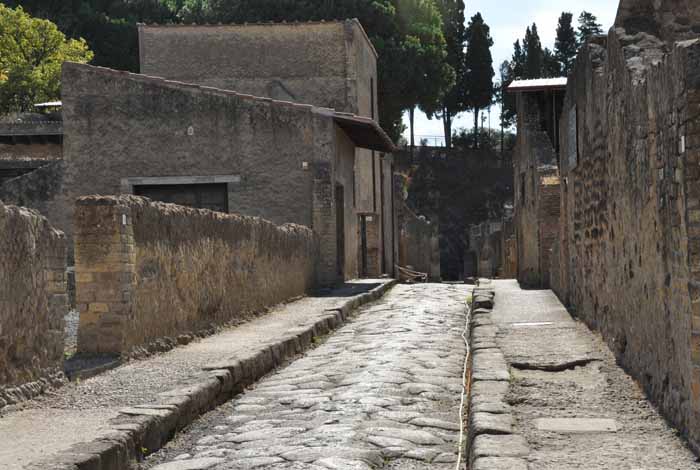
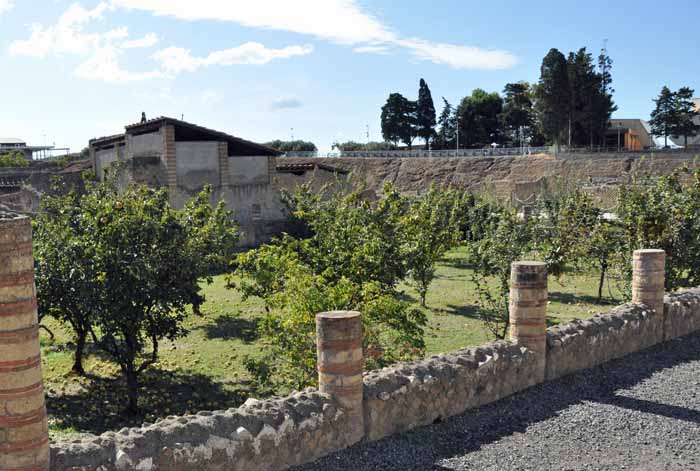
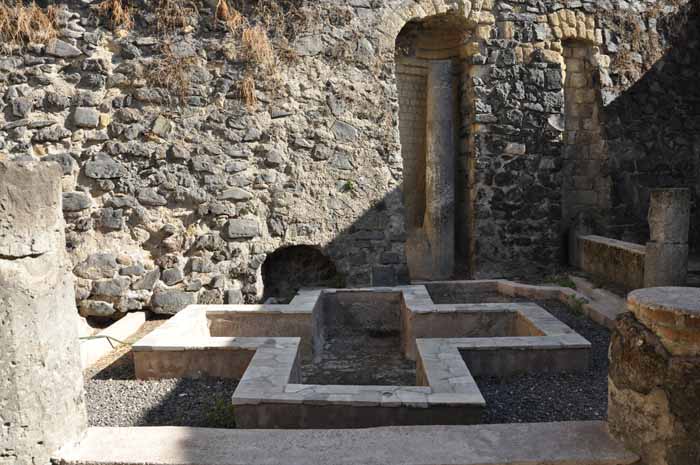





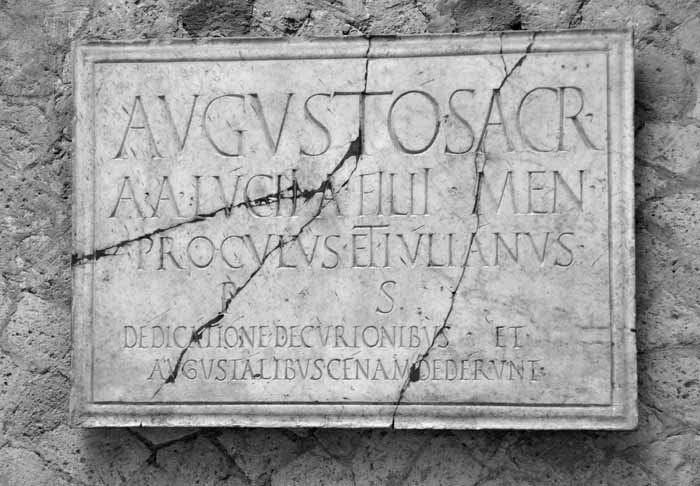
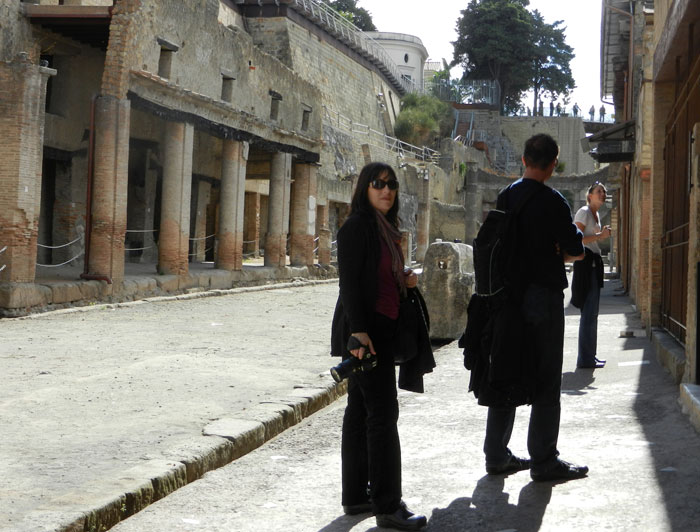


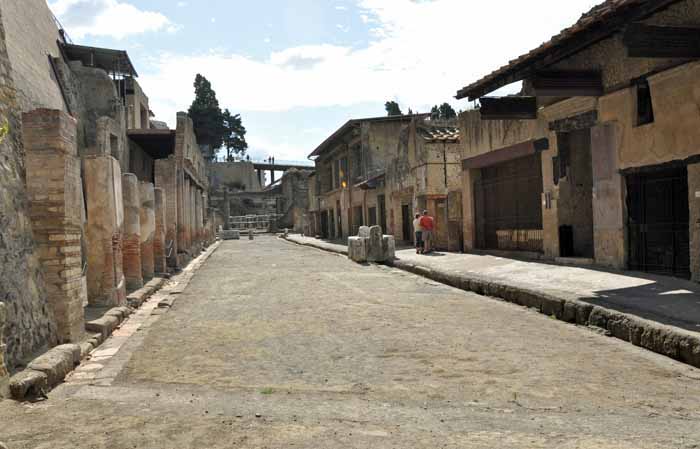
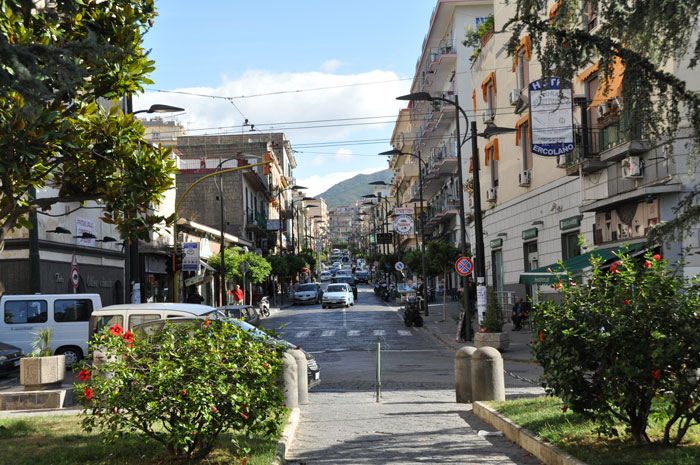
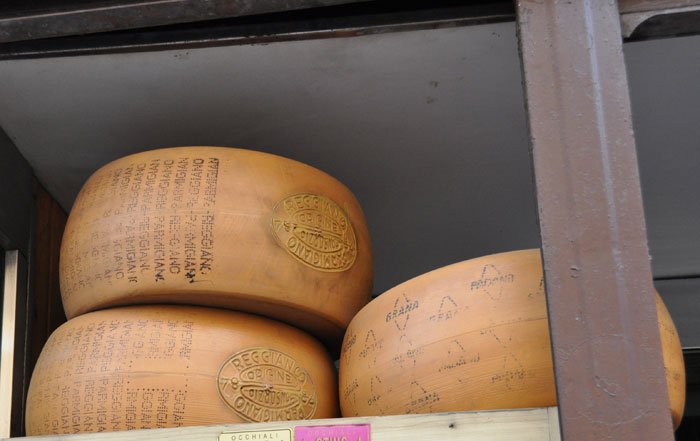
Resources for visiting Herculaneum:
Visiting Herculaneum: Pompeii’s Overlooked Neighbor on Why Go Italy
The official website for the archaeological ruins of Pompeii and Herculaneum (in Italian and English)
The UNESCO pages on Herculaneum
Tips for visiting Pompeii and Herculaneum in One Day on Italylogue
If you are in Naples, don’t forget to visit the Archaeological Museum there which holds most of the original artifacts and mosaics pulled from both Pompeii and Herculaneum.



20 Comments
Anise K. Strong
I know the woman who planted those gardens; they are direct reconstructions based on plant remains and seeds found in that area. The wine fresco lists prices – 2 (II) Asses (the standard cheap unit of measurement, here the 2-Buck-Chuck equivalent) up to 4 (IIII) asses – the same amount you could buy a decent loaf of bread or a cheap prostitute for. The amphorae in the picture below are mostly wine and oil amphorae, but on the left of that picture there’s one of the deep hearths with a giant round amphorae which would have held soup or stew for the fast-food customers who stopped by – think basically like a slow cooker at a soup-and-salad joint.
The plaque is a dedication by a former slave, incidentally, and an interesting combination of fairly expensive stone and a not very competent stonecutter, look at the T in the second line and the spacing. Saving costs, maybe? Anyways, it announces that he has endowed a yearly dinner for the chief elected officials and the priests of Augustus (all former slaves) of the town.
wired2theworld
Fantastic information Anise! I’m going to try and incorporate some of that into the descriptions in case people don’t read the comments. Thanks!
Anise K. Strong
Well, you might as well get some use out of having a Roman historian in the family!
wired2theworld
Absolutely. I love all the juicy tidbits and have included them above.
Myra
As always, wonderful pictures! I haven’t been south of Rome, but when I do go, Herculaneum and Pompeii are my top two places to visit.
wired2theworld
Myra- BOTH are worth a trip. Pompeii can be overwhelming, but I’d like to go back there too because they’ve opened a lot of new sections in the last decade.
Dave
Fascinating article Kristina! Really enjoyed it, and the great photos.
It’s always good to come across the relatively unknown things when compared to other events in the region that over shadow them.
Herculaneum looks like a place I’d like to visit. Am I right in thinking it’s quite place to visit?
wired2theworld
Dave, yes, it was incredibly quiet when we were there. There were a couple of tour groups going through, but it was easy enough to avoid them.
Kent @ No Vacation Required
So interesting (and fascinating info from Anise).
Please tell me that you grabbed one of those wheels of cheese for the train ride 🙂
jessietaylor92
I love the place! This is what I want to visit. Places like Rome, Jerusalem and other places which keep me closer to God. It’s not only you can spend your vacation and to take a break from hectic schedules but also to take time to recollect yourself.
Anna
I am in love with Naples! I have been to Pompeii, but never to Herculaneum. From what I see – it is more preserved than Pompeii, isn’t it?
Astrid Sanschagrin
I have only read of Pompeii through literature. I am surprised to see that some of the structures were remained in one piece. It seems interesting to see the designs of the old ruins and buildings of the place. It is because I could be able to imagine how creative the Pompeii people during the ancient times.
Armand
What a great place! The photos really shows that Herculaneum is a place where people have to visit and come to experience how the ancient time looks like. Thank you for posting the photos.
Lisa at Wanderlust Women
WOW – what excellent shots….it rained the day I was there. Can I ask what kind of camera you use? I need a new one.
wired2theworld
Lisa- I use a Nikon D5000 DSLR. We were blessed with perfect weather the day we were there.
Nancy
They did a great job excavating the buried city and preserving it. The entire area is a huge historical treasure. Thank you for sharing the beauty of the city in your photos.
Betty
The pictures of the city is fascinating. The result of the excavation is obviously successful. I always love to travel in places where I can imagine myself back in time.
Paula
Having been to Italy years ago with a smithsonian tour, I’m not sure why we did not go here unless I missed the date it was excavated. We did go to Pompeii. But so glad to see the photos and explanations. Just watched a history channel feature on Naples, volcanoes and possibilities of future eruptions which mentioned Herculaneum and sparked my interest. Thanks again.